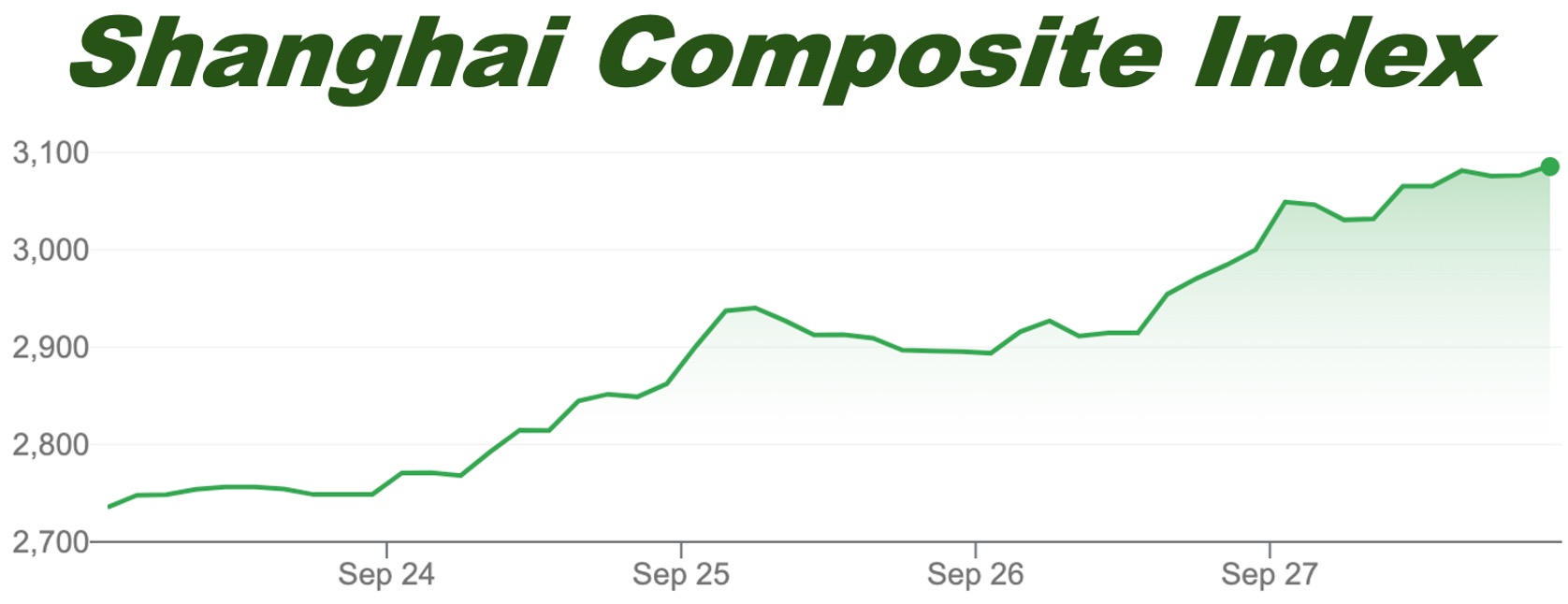China’s economy has been under significant strain, leading its authorities to implement bold and sweeping stimulus measures aimed at reversing its downward trajectory.
For the first time since the pandemic, China’s leadership has stepped away from their traditional piecemeal approach to stimulus and introduced a coordinated, large-scale economic intervention.
While this move has been welcomed by markets, there remain concerns about whether it will be enough to sustain long-term growth.
Key Stimulus Measures
Beijing’s latest economic measures include a variety of fiscal and monetary interventions. The most surprising of these involve direct central bank support for the stock market, significant injections of capital into state-owned banks, and consumer cash handouts, known as consumption vouchers, issued just before the Golden Week national holiday.
In addition, the People’s Bank of China (PBOC) has introduced major changes to support the housing market by reducing mortgage rates and cutting downpayment requirements for secondary homes.
Another important aspect of the stimulus measures is the reduction of the reserve requirement ratio (RRR) by 0.5 percentage points. This frees up approximately 1 trillion yuan ($142 billion) for banks to increase lending, primarily intended to boost infrastructure investment.
Interest rates have also been cut, including the seven-day reverse repurchase rate and the standing lending facility, which further lowers borrowing costs across the economy.

Immediate Impact of Stimulus Measures on Markets
The announcement of these measures had an immediate positive effect on China’s stock markets.
The CSI 300 Index experienced its strongest weekly gains since 2008, while the Shanghai Composite Index rose by 9% over three days. However, this sharp rally, while impressive, raises concerns that the reaction is driven more by speculative excitement than by confidence in the long-term health of the economy. Some analysts believe that Beijing’s efforts, while significant, may not fully address the core issues plaguing China’s economic recovery.
Challenges Facing China’s Economy
Despite the positive momentum in the stock markets, China’s economic challenges run deep. The property sector continues to struggle, with falling housing prices and a significant overhang of unsold housing stock.
This has made it difficult for Beijing to stabilize this crucial sector, which is a key pillar of household wealth in China.
Moreover, the labor market is under pressure, especially among younger workers, with youth unemployment reaching 18.8%.
Industrial profits have also taken a hit, falling by nearly 18% year-over-year in August, signaling broader economic difficulties.
International trade issues add another layer of complexity. With the U.S. presidential elections looming, China faces the potential threat of new tariffs, particularly if trade tensions with the West escalate.
These pressures have pushed Beijing to act decisively, but doubts remain about the long-term effectiveness of their stimulus efforts.
Mixed Outlook on Growth
Beijing has set a growth target of around 5% for this year, but many economists believe this will be difficult to achieve.
Institutions like Goldman Sachs and Citigroup have downgraded their growth forecasts to around 4.7%, citing continued weakness in consumer spending and the property sector.
While the manufacturing and export sectors have been somewhat resilient, this strength may prove temporary as global trade slows and tariffs rise.
There are also concerns that the focus on monetary easing alone will not be enough. Some experts argue that more aggressive fiscal policies, such as significant tax reforms and direct support for household consumption, are needed to revive sustainable growth.
As it stands, China’s stimulus measures may only provide short-term relief, akin to “painkillers” when more structural reforms are necessary.
Final Thoughts
China’s recent stimulus package represents one of the most aggressive efforts in years to stabilize its economy, yet skepticism remains about its ability to drive a true recovery.
While the immediate market reactions have been overwhelmingly positive, it is unclear whether this enthusiasm can be sustained in the face of deep structural issues.
The road to recovery will require more than just liquidity injections and interest rate cuts; fundamental reforms and continued fiscal support will be essential for China to regain its growth momentum.

